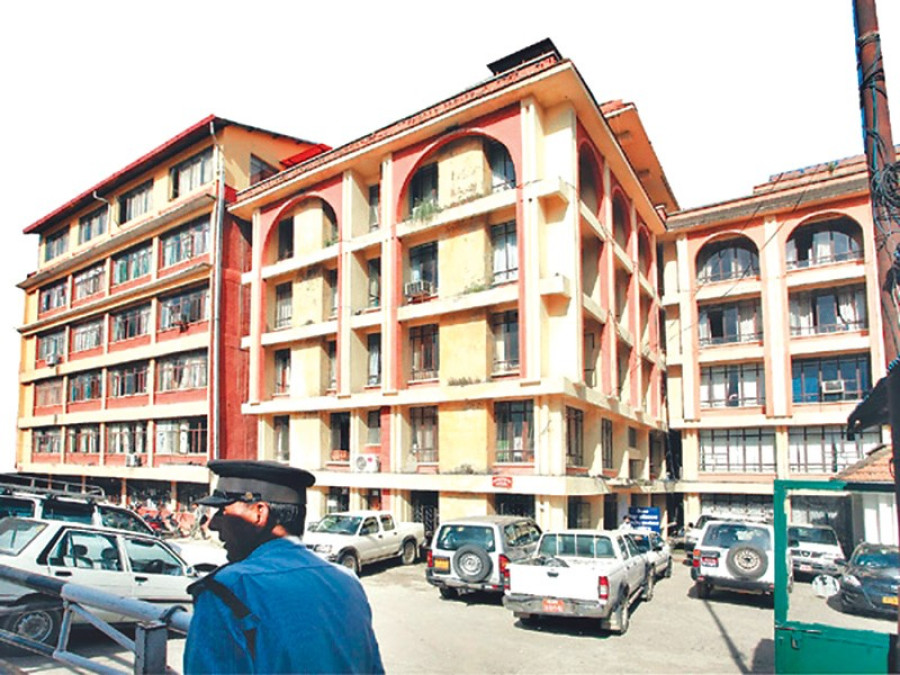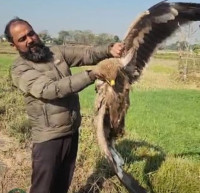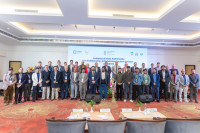National
Utility chief warns industrialists to pay dues or face theft charges for unauthorised electricity use
Two days after industrialists accused the Nepal Electricity Authority of illegally charging them, the power utility’s managing director on Thursday said that the big consumers colluded with former NEA heads to secure 315 megawatt electricity for their industries through dedicated feeders and trunk lines while the public faced outages up to 18 hours a day until a few years ago.
Prahlad Rijal
Two days after industrialists accused the Nepal Electricity Authority of illegally charging them, the power utility’s managing director on Thursday said that the big consumers colluded with former NEA heads to secure 315 megawatt electricity for their industries through dedicated feeders and trunk lines while the public faced outages up to 18 hours a day until a few years ago.
“In some instances, the former heads also bypassed legal requirements to unilaterally approve industries power through dedicated feeders and trunk lines without forwarding their applications to board members,” Kulman Ghising told reporters at an interaction in his Kathmandu office.
“All the industries are not clean like they claim to be and a majority of those who were supplied electricity through trunk lines have not abided by the billing by-laws,” said Ghising. “A committee is reviewing time-of-day meters and will reveal the hours of consumption and amounts owed by all industries in question to the state.”
A row between the industrialists and electricity officials intensified after the power utility sent them bills in line with its internal committee’s assessment that the industries supplied by dedicated feeders and trunk lines are yet to pay Rs4.3 billion in charges as per its billing provisions.
On Tuesday, three trade associations came to the defence of the industrialists and countered the utility’s billing, questioning the motive for slapping them such huge charges. They claimed that the state-owned supplier had even billed those factories that had not signed any agreements for regular electricity use.
Nonetheless, the committee, as officials say, had submitted an erroneous report as it put all the industries in the same basket and calculated the dues for one additional year when the billing by-laws, which classify dedicated feeder and trunk line billing mechanisms, had not come into effect.
In June 2015, a board meeting of the electricity authority had set premium charges for factories using electricity through dedicated feeders from August that year. A separate meeting of the now-dissolved electricity tariff fixation commission had decided in January 2016 to set premium charges effective from July for factories using direct electricity from dedicated feeders and trunk lines.
But the committee that investigated outstanding dues charged the industries from July 2014.
“While a majority of the industries using dedicated feeders have cleared the dues in time, those industries that have received direct and regular electricity through trunk lines connecting two substations are under investigation,” said Ghising.
“The committee is now reviewing individual consumption details of all the industries—particularly the 67 industries that are still receiving electricity through trunk lines.”
Meanwhile, the industrialists say they will not pay the ‘unacceptable’ amount as they have not signed any agreements with the state-owned utility and the electricity authority has billed them against the provisions of the billing by-laws.
On Tuesday, Pashupati Murarka, former president of the Federation of Nepalese Chambers of Commerce and Industry, said the utility has charged the 240 factories 70 percent higher than the usual rate. The authority itself is confused about the amount, he said, adding that the utility should not charge rates that go against the provisions.
As per the provisions of the billing by-laws, any industry that wishes to consume electricity from the trunk line for 20 or more hours like a dedicated feeder system will be liable to pay the charges applicable to dedicated feeder users. Such industries must get approval from the electricity authority board and cannot consume electricity for more hours than the outage schedule set by the authority for them.
"Any industry found to have used electricity for more than the permitted hours, flouting the load-shedding schedule, will be charged under the Electricity Theft Control Act-2002 and is liable to pay regular premium rates and compensation charges for unauthorised use of electricity," the by-laws state.
“If the industries are charged compensation rates for unauthorised use, the amount in question will be much higher than the mis-calculated estimate of Rs4.3 billion,” said an official who asked not to be named.
Asked why the electricity authority is billing the industries now for the power they used in the past three years, officials said they started the billing in 2015 and the industries in Birgunj and Bhairahawa corridors moved the court and received a stay order that allowed them to defer the payments.
“More industries have moved the court and brought stay orders but we have no differences with the industrialists and will propose that the newly formed electricity regulatory commision phase out the use of dedicated feeders as the country no longer witnesses load-shedding.” said Ghising, “But we seek payments for the electricity they have consumed.”
According to the Nepal Electricity Authority managing director, the NEA is currently charging industries Rs6.27 per unit on average while it buys electricity from independent power producers at an average rate of Rs7.50.
“We will phase out dedicated feeders and trunk lines but also seek higher charges from the industries as we cannot sell at a rate lower than the cost price,” Ghising said.
According to the electricity authority, 298 consumers are being supplied electricity through dedicated feeders and trunk lines. Among them, 184 pay premium rates.




 10.12°C Kathmandu
10.12°C Kathmandu















